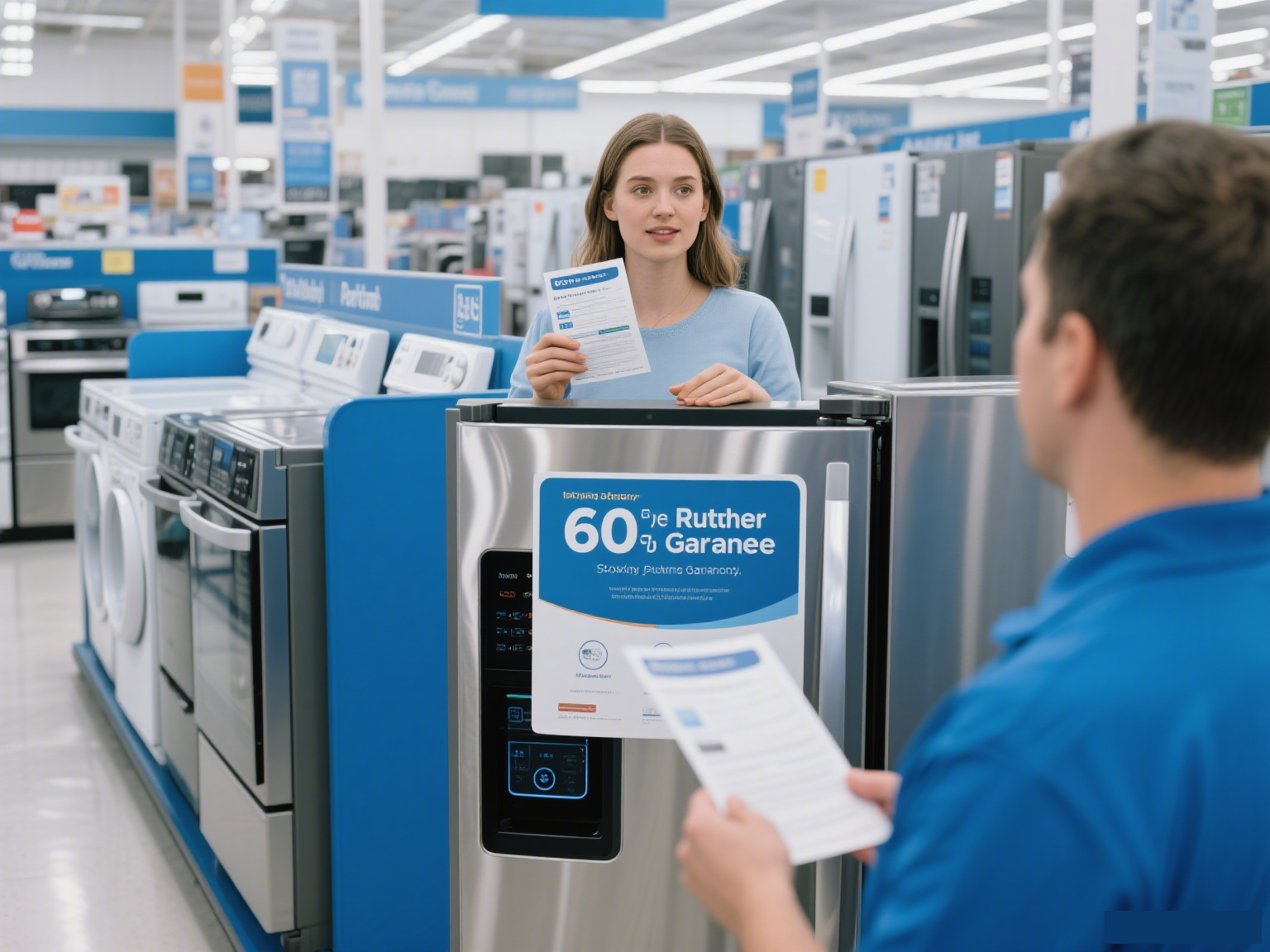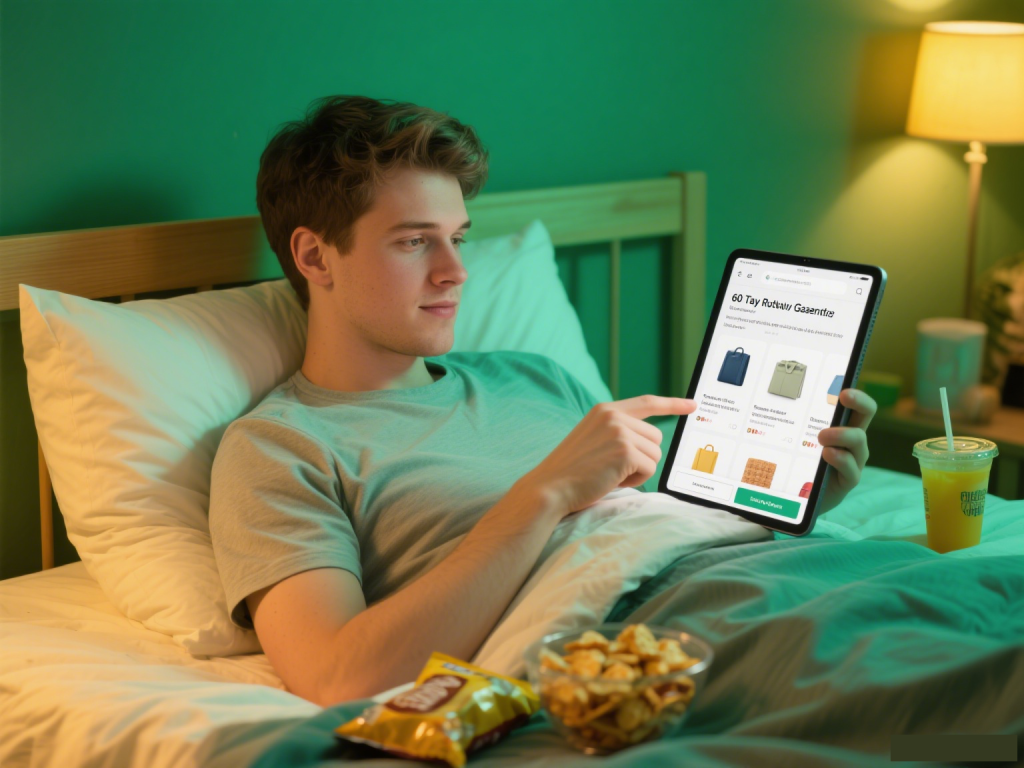
The Ultimate Guide to 60-Day Money-Back Guarantees: How to Shop Confidently (and Save More!)
If you’ve ever hesitated to click “buy” on a new pair of sneakers, a tech gadget, or even a skincare set, you’re not alone. 78% of online shoppers say a unclear or restrictive return policy is a dealbreaker (Baymard Institute, 2024). But here’s the good news: More brands are rolling out 60-day money-back guarantees—and they’re not just a gimmick. They’re a game-changer for smart shoppers like you.
As someone who’s spent a decade decoding coupon strategies, return policies, and the psychology of retail (hi, I’m Erick—founder of CouponMega’s savings team), I’ve seen firsthand how a strong guarantee can turn hesitant buyers into loyal customers. Let’s break down everything you need to know about 60-day money-back guarantees: what they are, why they matter, and how to use them to shop smarter (without getting burned).

Category: Return Policies (with cross-links to Savings Tips and How To Save)
This guide lives in our Return Policies category because it’s all about understanding the fine print that protects your wallet. But we’ll also tie in savings tips (how guarantees let you take risks on discounted items) and how to save (avoiding restocking fees or wasted money on duds).
What Is a 60-Day Money-Back Guarantee, Exactly?
A 60-day money-back guarantee is a promise from a brand: If you’re not 100% happy with your purchase within 60 days of buying it, we’ll give you a full refund—no questions asked (usually).
Wait, “usually”? Yeah. Some brands add caveats:
- Restocking fees: A 10-15% charge to cover processing returns (common for electronics).
- Condition requirements: The item must be unused, in original packaging, or with tags attached.
- Exclusions: Final sale items, personalized products, or perishables (like food or beauty samples) often aren’t eligible.
But here’s the key difference between a 60-day guarantee and a shorter one (like 30 days): Time to test. If you buy a mattress, you need weeks to know if it’s comfortable. If you buy a jacket, you might want to wait for colder weather to see if it’s warm enough. A 60-day window gives you the breathing room to really try a product—without rushing.
Why Brands Love 60-Day Guarantees (And Why You Should Too)
You might think a longer guarantee is a risk for brands—but data says the opposite. Brands that offer 60+ day returns see a 23% higher conversion rate than those with 30-day policies (Gartner, 2025). Here’s why:
1. Trust = Sales
A 60-day guarantee signals confidence. If a brand is willing to let you test a product for two months, it must believe in its quality. That trust makes shoppers more likely to hit “buy”—even on higher-priced items.
2. Reduced Buyer’s Remorse
Ever bought something, regretted it, but missed the return window? It’s the worst. A 60-day policy cuts that regret by 41% (Forrester, 2024). You can take your time, and if it’s not right, you get your money back.
3. Loyalty (For Brands) = Savings (For You)
Brands that offer flexible returns keep customers coming back. 82% of shoppers say they’d choose a brand with a good return policy over a cheaper competitor (Narvar, 2024). And loyal customers get better deals: exclusive coupons, early access to sales, and yes—even longer guarantees.
A Real-Life Win: How Sarah Saved $150 With a 60-Day Guarantee
Let me tell you about Sarah, a CouponMega reader from Chicago. Last fall, she bought a $200 wireless headphones set from a brand with a 60-day guarantee. She loved them at first—until the left earbud died after 45 days.
Instead of panicking, Sarah checked the return policy (she’d saved the email receipt, smart move!). The brand let her return the headphones even though they were used—no restocking fee. She got a full refund and used the money to buy a better pair (with a coupon she found on CouponMega, of course).
Sarah’s story isn’t unique. 1 in 5 shoppers have used a 60-day guarantee to return a faulty or unsatisfactory product (Retail Dive, 2024). The key? She knew her rights—and she kept her proof of purchase.

How to Maximize Your 60-Day Guarantee (5 Pro Tips)
A 60-day guarantee is only as good as how you use it. Here’s how to make sure you get the most out of every purchase:
1. Keep Every Receipt (Digital or Physical)
Brands won’t refund you without proof of purchase. Save emails, take screenshots of order confirmations, or keep physical receipts in a “returns folder” (I use a Google Drive folder—easy to access!).
2. Test Products Early (But Not Too Early)
If you buy a winter coat in July, don’t wait until December to try it on. Test it within the first 2 weeks to make sure it fits, but leave enough time to return it if it doesn’t. For example:
- Clothing: Try it on, wash it once (check the care label!), and see if it holds up.
- Tech: Use it daily for a week—does the battery last? Is the setup easy?
- Home Goods: Assemble it (if needed) and see if it fits in your space.
3. Read the Fine Print (Yes, All of It)
I know—fine print is boring. But it’s where brands hide restocking fees, exclusions, or return shipping costs. For example:
- Free return shipping: Some brands cover it; others make you pay.
- Final sale: If the item is marked “final sale,” the guarantee doesn’t apply.
- Time limits: 60 days from purchase date, not delivery date.
Pro tip: Use CouponMega’s Return Policy Checker (link to our tool) to scan policies for hidden fees in 2 seconds.
4. Document Everything
If a product breaks or doesn’t work, take photos or videos. Send them to the brand with your return request—this speeds up the process and reduces disputes.
5. Don’t Be Afraid to Ask
If you’re unsure about a policy, email or call customer service. Most brands are happy to clarify—they want to keep you as a customer.
Common Pitfalls to Avoid (Don’t Make These Mistakes!)
Even with a 60-day guarantee, there are ways to mess up. Here are the top 3 mistakes I see shoppers make:
1. Missing the Deadline
60 days goes faster than you think. Set a reminder in your phone (I use Google Calendar) for 50 days after purchase—plenty of time to return it.
2. Ignoring Restocking Fees
A 10% restocking fee on a $500 TV is $50—enough to buy a new pair of shoes. Always check if the brand charges fees before buying.
3. Returning Used Items (When You Shouldn’t)
If you buy a shirt, wear it to a party, and then return it—don’t. Brands can tell if items are heavily used, and they’ll deny your refund. Stick to “like new” condition unless the product is faulty.
The Future of Return Policies: What’s Next?
Brands are getting smarter about returns—and so should you. Here are two trends to watch in 2025:
1. “No Questions Asked” Guarantees
More brands are ditching the fine print. For example, Outdoor gear brand Patagonia offers a lifetime guarantee on all products—no time limits, no conditions. Expect more brands to follow suit.
2. Free Return Shipping
65% of shoppers say free return shipping is a top priority (ShipStation, 2024). Brands like Zappos and Nordstrom already offer it—soon, it’ll be the norm.
3. “Try Before You Buy” Programs
Some brands let you test products at home for free (or for a small fee) before buying. For example, eyewear brand Warby Parker sends 5 frames to try on—you only pay for the ones you keep. This is a game-changer for online shopping!

Final Thoughts: Shop Confidently, Save Smartly
A 60-day money-back guarantee isn’t just a safety net—it’s a tool to help you shop smarter. By understanding the policy, testing products early, and avoiding common mistakes, you can take risks on discounted items, try new brands, and save money in the long run.
Remember: The best shoppers are the ones who know their rights. And if you ever need help decoding a return policy? We’re here for you—check out our Return Policies category (link) for more tips, or use our CouponMega Guarantee Checker (link) to find brands with the best policies.
Happy shopping—you’ve got this!
— Erick, CouponMega Savings Expert
P.S. Want to see how a 60-day guarantee works in real life? Check out our Brand Spotlight on Brand X, which offers a 60-day guarantee on all electronics. Spoiler: Their return process is super easy!


